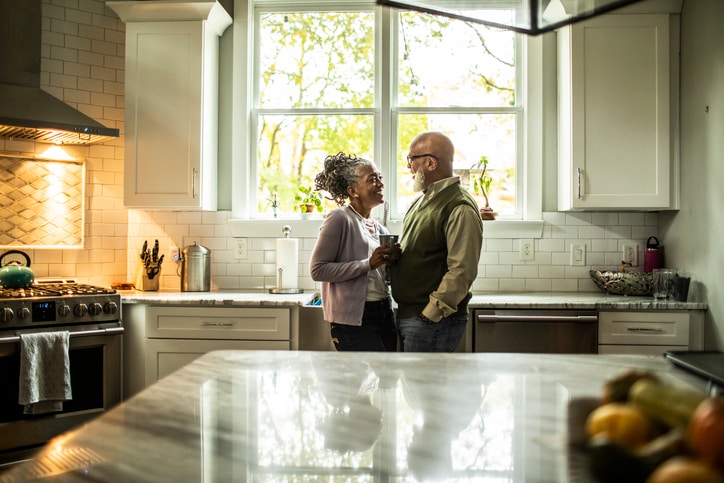When Rick could not remember where he kept his trusted toolbox, and then forgot his computer passwords, Sandy — Rick’s wife of 40 years — initially wasn’t alarmed. Sandy misplaced stuff all the time and who can remember all those passwords anyway? But over time the signs became more ominous. Rick, a 69-year old retired truck driver with a GPS-like sense of direction, got lost driving home from the grocery store one day. Concerned, Sandy took Rick for a medical evaluation to figure out what was going on. Then they got the grim news: Rick had Alzheimer’s disease.
Currently an estimated 5.7 million Americans have Alzheimer’s disease and 47 million people worldwide suffer from it. By 2050 these estimates are projected to triple and the direct cost to American society may exceed a trillion dollars — a price we will all pay in one way or another. Although the disease does not discriminate, it disproportionately impacts women. Women are twice as likely to suffer from Alzheimer’s and more than twice as likely to care for someone with the disease.
At the time of Rick’s diagnosis, Sandy had just retired from a long and rewarding career as a nurse. She was looking forward to relaxed days playing golf, spending time with grandchildren, and traveling to places she and Rick had never seen. At 62, Sandy thought her caregiving days were behind her. Then suddenly and unexpectedly, she joined the ranks of the roughly 16 million family members in the U.S. caring for someone with dementia.
Close to half of all family caregivers who help older adults are caring for someone with Alzheimer’s or some other form of dementia and they shoulder both a heavy emotional and financial burden. These devoted spouses, daughters, sons, and grandchildren provide over 18 billion hours of unpaid care for people with dementia at an estimated economic value of $232 billion.
What do they do? They help with activities of daily living their loved ones can no longer manage on their own such as getting dressed, eating, bathing and going to the bathroom. In addition, families manage medications, prepare meals, pay bills and provide one of the most vital functions foundational to human existence: connection.
As Rick’s disease progressed, Sandy took on an increasing amount of caregiving duties and the hours and costs started piling up. Over time, the financial picture was bleak. While Sandy and Rick had a small amount stocked away for retirement, they did not have long-term care insurance or much in the way of savings. As a nurse, Sandy was aware that long-term care is costly. The type of care most often needed for those with dementia is considered “custodial” and not typically covered by Medicare.
In Massachusetts, where the couple lived, the average annual cost of a nursing home is over $140,000 and the median hourly rate for in-home care is $25. That was much more than Rick and Sandy could afford. And that’s not atypical. People with dementia who need institutional or home-based care can incur enormous expenses that are often borne by family members, most often spouses. If someone needs round-the-clock care, which Rick eventually did, the cost can actually exceed the rate of a nursing home. In some cases, a solution for someone in Rick’s position would be Medicaid, the primary payer of nursing home care. (Now, through state waiver programs, Medicaid is shifting long-term care payments from institutional care to home and community based programs.) But Rick didn’t have Medicaid, either. He was considered ineligible because his total assets exceeded the $2,000 limit allowed by MassHealth (which is what Medicaid is called in Massachusetts).
Wanting to keep Rick at home, Sandy hired a paid caregiver to help, but was only able to afford a few hours of care a week. Sandy and Rick’s 32-year-old daughter, Grace, stepped in to help keep an eye on her dad and give her mother a much needed break. Reducing her hours at work was difficult and costly, but Grace felt she had no choice.
Like Grace, the majority of caregivers are in the workforce, and 60% report experiencing problems related to financial pressures caused by not being able to work or having to reduce their hours. This pressure is particularly intense for millennial caregivers, who have less earning capacity and savings, yet spend a larger proportion of their wages on caregiving expenses.
Family caregivers for adults with dementia spend over $10,000 annually on out-of-pocket caregiving expenses such as medicine, personal care items, transportation, co-pays and paid caregivers. That’s nearly twice the amount of out-of-pocket costs incurred by those caring for adults without dementia.
Prepare for the unexpected costs of care
Harry Margolis, an elder law attorney and founder of Elder Law Answers, urges families to plan in advance for long-term care. To be eligible for Medicaid, many people will need to transfer assets years ahead of time. There are also ways to “spend down” your assets toward “medically necessary” expenses that can qualify your family member for Medicaid. These may include medical bills not otherwise covered by insurance, medication costs, and even pre-paid funeral arrangements. Part of planning ahead is finding out whether your parent has funds stocked away to pay for care. As crude as it may seem, having financial resources—or not—may determine the type of long-term care your parent will ultimately receive.
As Rick’s condition deteriorated, Sandy had greater difficulty handling his day-to-day care, even though she was a nurse. Her old back injury flared up and she was no longer able to lift Rick at all. Sandy understood that family caregivers are at greater risk for injuring themselves and are more prone to depression and chronic illness. She recognized the tell-tale signs of burnout and knew that the current situation wasn’t working for her—or Rick either.
Through the help of an elder law attorney, Sandy was eventually able to get Rick on Medicaid by spending-down their savings toward medically necessary expenses. Sandy was also worried that she would lose her house in the process. The elder law attorney reassured Sandy that her home was not considered a “countable asset” as long as Sandy was still living there. That was an enormous relief. While the elder law attorney was an unexpected cost, it probably saved Sandy boatloads of money in the long run and enabled her to ultimately find the right care for Rick.
Eventually, Sandy made the difficult decision to move Rick to a memory disorder facility nearby. Without Medicaid, Sandy could not have afforded the six figure price-tag. She knew that Rick would receive the 24-hour care he needed and she visited him every day. Sadly, because of Rick’s disease, part of him was forever lost. But Sandy was no longer preoccupied with figuring out how she was going to pay for Rick’s care. She could now focus on what really mattered—spending time with the man she loved and finding ways to connect with the person who was still very much there.
Jody Gastfriend is the Vice President of Senior Care at Care.com and author of “My Parent’s Keeper: The Guilt, Grief, Guesswork and Unexpected Gifts of Caregiving.” Follow her on twitter.





